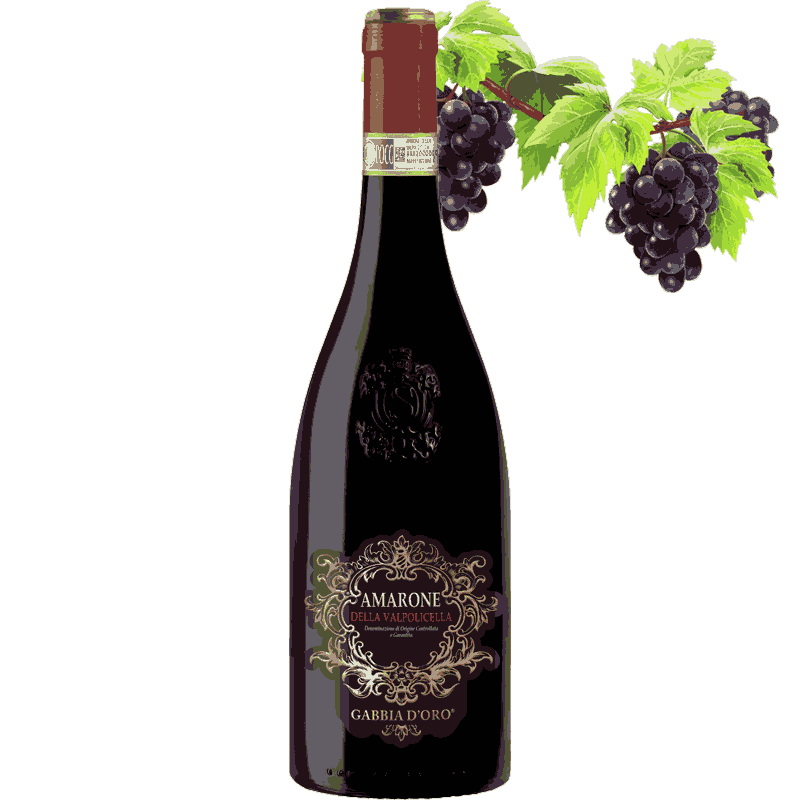- New


By entering this site you are agreeing to the Terms of Use and Privacy Policy.
Shipped worldwide, large selection of wines
Tasting note:
Bright ruby red Complex fruity bouquet with notes of cherry, black cherry Notes of red berries, vanilla, raisins and tropical fruit Full, well-balanced wine Long finish Goes well with red meat, game.
Amarone is definitely one of the most famous Italian red wines in the world. It is produced in Valpolicella , a wine region located a few kilometers from Verona, in the Veneto region (Italy). Today it is considered one of the great Italian red wines, an iconic wine, like Barolo, Brunello (and Chianti) and Supertuscans.
While many people know the name and may have even tasted it, few know what makes Amarone so unique. In this article, you will discover step by step how the king of Valpolicella , Amarone, is made.
First of all, Amarone is not a varietal wine (meaning it is made from a single grape), but it is the result of a blend of grapes. The grapes are indigenous red varieties, which historically only grow in Valpolicella . Amarone is a DOCG wine and therefore the production must meet certain parameters and requirements established by a regulation. The choice of grapes is one of them. Some varieties are mandatory, while others are optional, depending on the choice and taste of the winemaker.
The obligatory grapes are:
Corvina + Corvinone (45-95%)
Corvina is the signature grape of Amarone, the main ingredient that most characterizes Amarone and Valpolicella wines. The name comes from the Italian word "Corvo" (crow) because the ripe berries have a very dark color, almost bluish, which makes think of the plumage of this bird. Corvina grapes have oval berries, good acidity and medium tannins. It gives Amarone a ruby red color, longevity and the typical hints of red fruits (especially cherry).
For many years, Corvinone was wrongly considered a biotype of Corvina. In other words, a grape from the same family as Corvina, but with larger berries. Only recently have some DNA tests shown that Corvinone is in fact an independent variety. It gives Amarone structure and the spicy note so appreciated in this wine. The size of the berries also represents a great advantage in terms of yield and accelerates the harvest.
Rondinella (5-30%)
The exact origin of the name, which literally means "little swallow," is a matter of debate. Some say it derives from the V-shaped leaf that resembles a swallow's tail. Others say it is because birds ( including swallows) particularly appreciate the small berries. According to others it is so called because the color is reminiscent of the swallow's coat color. What is certain is that all three of these characteristics are true. The berries are in fact smaller than other grapes, round and dark in color. Rondinella has a thick skin and brings to the Amarone blend aromatic notes, hints of red fruit and floral scents. When fully ripe, it reaches a high sugar content. It is in fact the favorite grape for Recioto- to produce wine, the sweet version of Amarone.
Manual harvesting is another fundamental step in understanding how Amarone is made.
There are essentially two reasons for this. The first is the selection of the bunches, which only a human (and skilled) eye can do. In fact, not all bunches are suitable for the next step, the drying process. Amarone grapes must be perfectly healthy , with an undamaged skin. The bunch must not be compact, but spread out, to ensure air circulation between the berries and thus avoid the risk of mold and mildew. Secondly, the grapes must be treated with delicacy and care so as not to damage the skin break, not to release the must and not to start the fermentation.
Amarone bunches are placed in wooden or plastic crates, in which they will spend the drying period. It is important to load only one layer of grapes per crate. In this way, in fact, no grape will be crushed under the weight of the others and will the air comes into contact with all the grapes.
Valpolicella is one of the few regions in the world where traditional harvesting methods are still used, which have remained virtually unchanged over the centuries. A visit to the cellars in September during the harvest is a unique experience that gives the feeling of stepping back in time. to set the time.
Data sheet
Specific References
No customer reviews for the moment.